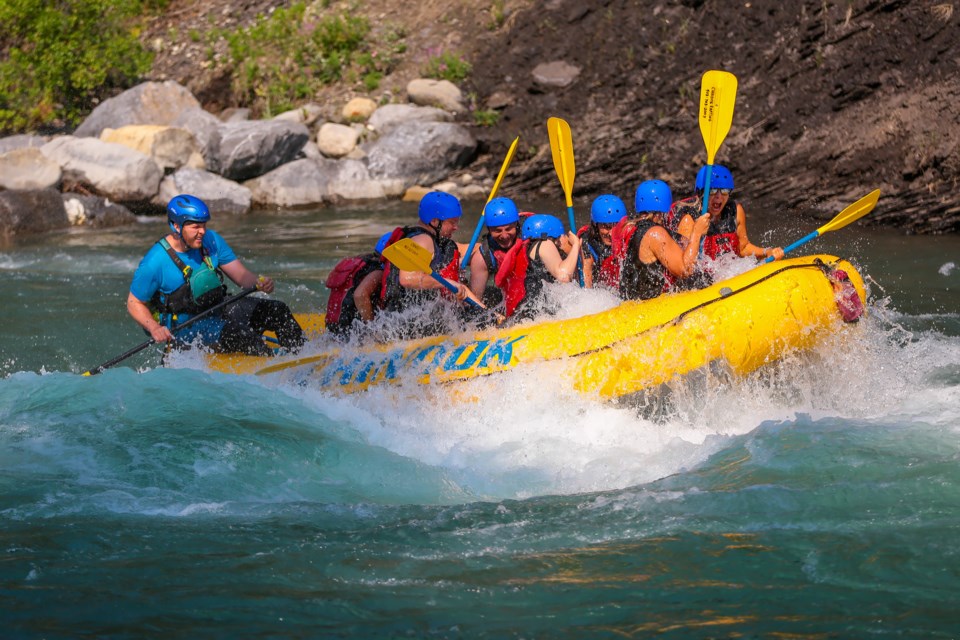CANMORE – The tourism industry has been significantly impacted during the COVID-19 pandemic.
As the primary business industry for Bow Valley communities, the sector has slowly started to show signs of a rebound in recent months, particularly as international travel is once again opening up.
While city destination sites are likely to lag behind, existing estimates show the region’s tourism field could recover to the 2019 numbers as early as 2023, but likely not until 2024.
“We’re lucky to be in the Rocky Mountains. The cities will likely lag behind that. We are hoping to be full speed ahead in 2024 at the latest,” said Rachel Ludwig, who became the Tourism Canmore Kananaskis (TCK) CEO in June after serving as the interim CEO during parts of 2020 and 2021.
The pandemic has continued for slightly more than a year-and-a-half, but there are signs of heading back to 2019 numbers.
“We will be pacing far ahead of the city properties,” TCK board of directors' chair Andrew Shepherd said. “Resort towns and resort properties in Alberta are pacing well ahead of them. They’re expected to lead Alberta out of the doldrums. We’re very happy where we’re at.”
During the TCK annual general meeting on Oct. 21, Ludwig applauded tourism-based businesses ability to adjust to changing public health guidelines.
“Tourism businesses did an amazing job to pivot their businesses to whatever they needed to do to stay open and stay afloat and make the best of the situation.”
TCK is the not-for-profit destination marketing organization for the region of Canmore and Kananaskis Country.
The organization launched a one-year marketing program in March to assist pandemic impacted businesses. The program provides tourism-based businesses free basic marketing services through promotions, digital strategies and marketing campaigns.
The tourism group also received the World Travel and Tourism Council safe travel stamp that is adopted by locations that met the globally standardized health and hygiene protocols for public safety from the pandemic.
The Pledge to the Peaks Initiative was also launched as an oath for travellers and residents to show care and respect for the region and be stewards of the land. The pledge acknowledges the Treaty 7 lands and provides a further resource for visitor centres to educate tourists.
“Because we’re a small team and we have that entrepreneurial spirit, we were able to adapt pretty quickly,” Ludwig said. “We have the support and backing of Travel Alberta and the provincial partners to be able to do what we need to do to get our industry through the pandemic.”
The organization ended 2020 with assets of just under $900,000, which was an increase from the $566,000 in 2019. The net assets were $820,000 at the end of last year, while 2019 was at $468,000.
Of its 2020 revenue, the most significant source was about $500,000 from hotel memberships and a further $375,000 from government grants and subsidies. The remaining $250,000 was from the visitor centre and marketing buy-in.
For expenses, roughly $450,000 went into marketing, while $345,000 went to reserves and $200,000 was for visitor experience initiatives. The administrative costs were about $120,000.
Vijay Domingo, the board’s treasurer, highlighted the significant amount of expenses that goes directly into marketing or visitor experience.
“We’re in a very strong position as an organization,” Domingo said. “The organization is very strong, even in the challenging times we faced with COVID.”
The province emphasized the importance of tourism in Alberta in its last budget, which announced an ambitious plan to double tourism spending in the province to about $20 billion a year by 2030.
The most recently completed Statistics Canada Travel Survey of Residents of Canada study in 2018 had $8.2 billion spent on tourism and 35.2 million visits in Alberta.
Travel Alberta also estimated there were 68,800 tourism-based jobs in Alberta during 2018 and roughly 20,000 tourism-related businesses.
The 2016 tourism economic impact study launched by Banff, Jasper and Canmore estimated tourism in Canmore and Kananaskis adds about $345 million into the local economies and helps support 4,000 jobs.
While Albertans regularly flock to the mountains for overnight stays or day trips, international travellers or those from out of province spend the lion’s share of the visitor money.
According to the Tourism Industry Association of Alberta, international travellers spend about $1,180 per visitor per visit, Americans fork out $900 per visit and Albertans contribute $157 per visit.
“We need to continue to market for the out-of-province visitor, which means Ontario, Quebec, the United States and beyond the U.S. so we get the higher spending traveller back who stays longer and spends more money with our tourism businesses,” Ludwig said.
Visitation has significantly increased in the valley in recent years, but Kananaskis Country saw the largest change after roughly 5.4 million people visited in 2020 and more than three million visit this year.
The user pass for Kananaskis Country that was introduced June 1 has raised about $10 million in its initial months, but the province has yet to provide a breakdown on where the money is specifically going or if it remains in Kananaskis Country or is sent to all corners of the province.
The pass has seen slightly more than 250,000 sold, including about 37,000 to Indigenous individuals and roughly 13,000 to low-income Alberta residents.
The Town of Canmore’s tourism task force wrapped up its initial work and the consultant, Stormy Lake Consulting, recommended the creation of a tourism roundtable to better help guide future tourism-related decisions.
“What will now happen and be very important work, is to do the next step, to get the tourism roundtable established with the Town of Canmore and to start the work of having pillars, action items, who is acting on them, what’s the timeframe, where’s the budget coming from," Ludwig said. "All those pieces will need to be figured out, but I’m very happy and excited to incorporate the learnings of the framework into the organizational structure.”




